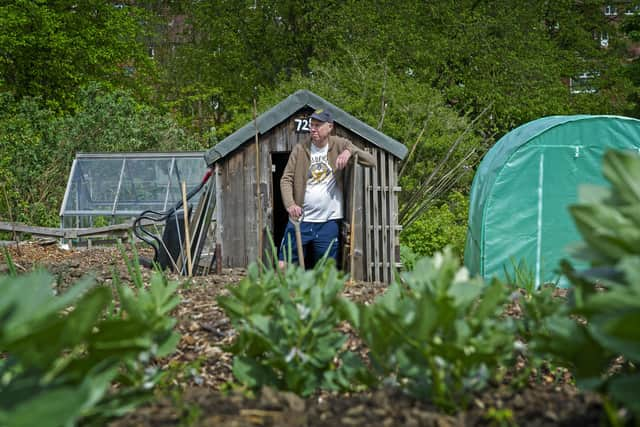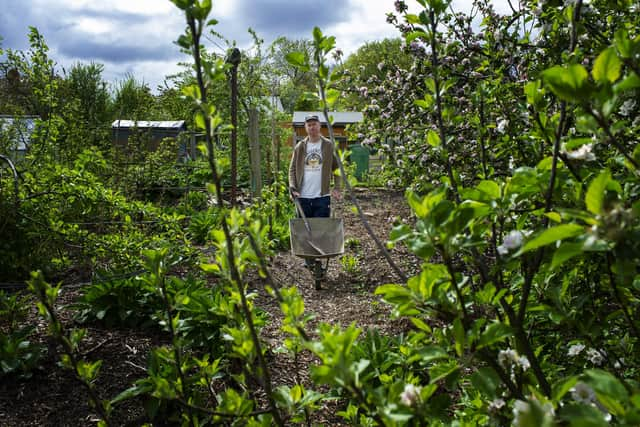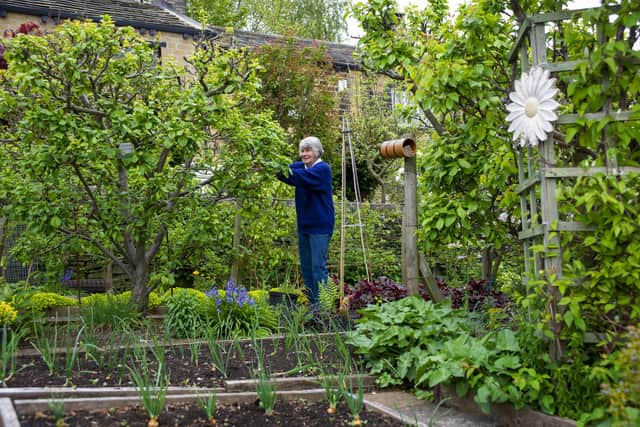The original social distancing – allotment holders enjoy their days in the sun
Across the region, allotment societies have reported increased demand and unusual levels of activity as those who normally have to go to work spend their days pottering amongst the potting sheds.
Some have also noticed new patterns of insect and animal behaviour induced by the quieter surroundings.
Advertisement
Hide AdAdvertisement
Hide Ad“It does seem to have been busier recently. I’m seeing people I’ve never seen before, to be honest,” said Martin Copeland, chairman of the Chapel Allerton Allotments and Gardens Association, not far from Roundhay Park in Leeds.


“A lot of people aren’t working, and with the good weather they have taken the opportunity to get down to their plots, conscious that because of the nature of the layout they can keep their distance.”
Like many holders of coveted £100 council licences, he had been worried that the allotments would be fenced off at the start of the lockdown, but said that in the event he had received little advice other than to wash his hands regularly.
“This is the busiest time of year, when we’re putting everything in, and we were worried we’d be locked down. Instead, we’re getting exercise and still maintaining some kind of social contact. It’s quite lucky, really.”
Advertisement
Hide AdAdvertisement
Hide AdHowever, garden life beyond the 3,000 or so square feet of each plot is unlikely to take root this year.


“We’ve got quite a varied social calendar, with biggest marrow shows, that kind of thing. But the spring one is cancelled, probably summer and possibly autumn, too,” Mr Copeland said.
Ann Longley, secretary of the Pudsey Allotments and Cottage Gardeners’ Association, who has worked her plot for 40 years, said: “It really is a sanctuary. We can go there and chat to people without getting near to anyone. There’s enough room for social distancing.”
Around 40 people of all ages tend to different patches of the land off Crimbles Terrace, some of which have been divided into half or quarter-sized plots.
Advertisement
Hide AdAdvertisement
Hide Ad“It used to be elderly men but now quite a lot of young people come,” said Mrs Longley, who gives her surplus produce to friends, neighbours and to charity.


“The younger ones who are home working are coming to escape from their husbands and children for a while. Also they want their children to know that cabbages don’t just come from Sainsbury’s.”
Around 10 more families were now waiting for a plot to become vacant, she said, a picture repeated at allotment societies across the region.
At the Scarcroft plots in York, Sara Robin, who keeps track of the changing pattern of nature, said the combination of warm weather, increased human activity on the plots and quieter surroundings had produced a flurry of reports of new wildlife, with regular sightings of Holly Blue and Speckled Wood butterflies.
Advertisement
Hide AdAdvertisement
Hide Ad“I think because people are staying nearer home they are noticing so much more that is near them,” she said.
Editor’s note: first and foremost - and rarely have I written down these words with more sincerity - I hope this finds you well.
Almost certainly you are here because you value the quality and the integrity of the journalism produced by The Yorkshire Post’s journalists - almost all of which live alongside you in Yorkshire, spending the wages they earn with Yorkshire businesses - who last year took this title to the industry watchdog’s Most Trusted Newspaper in Britain accolade.
And that is why I must make an urgent request of you: as advertising revenue declines, your support becomes evermore crucial to the maintenance of the journalistic standards expected of The Yorkshire Post. If you can, safely, please buy a paper or take up a subscription. We want to continue to make you proud of Yorkshire’s National Newspaper but we are going to need your help.
Advertisement
Hide AdAdvertisement
Hide AdPostal subscription copies can be ordered by calling 0330 4030066 or by emailing [email protected]. Vouchers, to be exchanged at retail sales outlets - our newsagents need you, too - can be subscribed to by contacting subscriptions on 0330 1235950 or by visiting www.localsubsplus.co.uk where you should select The Yorkshire Post from the list of titles available.
If you want to help right now, download our tablet app from the App / Play Stores. Every contribution you make helps to provide this county with the best regional journalism in the country.
Sincerely. Thank you.
James Mitchinson, Editor
Comment Guidelines
National World encourages reader discussion on our stories. User feedback, insights and back-and-forth exchanges add a rich layer of context to reporting. Please review our Community Guidelines before commenting.